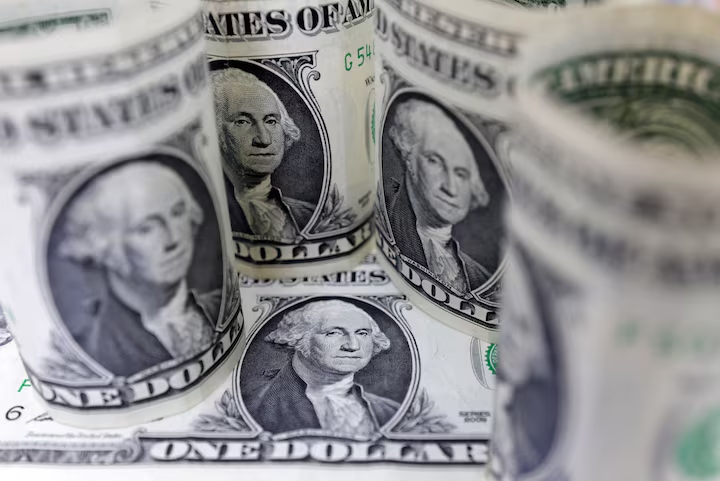The global financial landscape is a complex web of interconnections influenced by various factors such as monetary policy decisions, geopolitical tensions, and economic indicators. Recently, the release of the Federal Reserve’s (Fed) meeting minutes has triggered a significant drop in the euro against the US dollar, marking its lowest level in two months. This decline underscores the evolving expectations surrounding interest rate adjustments from both the European Central Bank (ECB) and the Fed. In this article, we delve deeper into the reasons behind the euro’s recent struggles, the implications of the Fed’s monetary policy, and the broader economic context that shapes currency values.
Euro’s Recent Decline
Fed Meeting Minutes: Key Insights
The Fed’s meeting minutes, made public on a Wednesday, showcased a divided stance among officials regarding the need for a 0.5% interest rate cut. This division is crucial, as it signals a potential slowing down of future rate cuts, ultimately supporting the dollar. Following the announcement, the euro plummeted to 1.09, its lowest level since August 13.
Implications of the Fed’s Stance
- Market Reaction: The market responded to the Fed’s nuanced stance, leading to a 2.3% decrease in the euro since late September. This reflects the prevailing sentiment among investors regarding the divergent paths of monetary policy between the ECB and the Fed.
- Long-Term Effects: As the Fed signals a cautious approach to interest rates, the euro’s decline may not be a temporary fluctuation but rather a sustained trend influenced by ongoing economic indicators and central bank actions.
ECB’s Upcoming Policy Meeting
With the European Central Bank poised to hold its policy meeting shortly, expectations of a third interest rate cut this year add to the euro’s pressure. The ECB is facing mounting pressure to adjust its monetary policy in light of economic conditions across the Eurozone.
Factors Affecting ECB’s Decisions
- Economic Indicators: Recent data suggests a weakening economic landscape in Europe. The Eurozone’s Consumer Price Index (CPI) fell to 1.8% in September, below the ECB’s target of 2%. This decline in inflation reflects softer economic conditions and could push the ECB toward a more dovish stance in its upcoming meeting.
- Market Sentiment: As expectations shift regarding the ECB’s policies, market participants are likely to reassess their positions, further influencing the euro’s value. The prospect of additional rate cuts could weigh heavily on the currency’s performance.
The Impact of Fed’s Policies on Euro-Dollar Dynamics
Interest Rate Divergence
The contrasting approaches to monetary policy between the Fed and the ECB are pivotal in shaping the euro-dollar dynamic. In September, the Fed initiated a looser monetary policy cycle, leading to a significant rate cut that temporarily weakened the dollar and boosted the euro.
Current Market Dynamics
- Market Sentiment Shift: As expectations evolve, market participants are now anticipating a more cautious approach from the Fed, coupled with a potentially more aggressive stance from the ECB. This shift has implications for how investors position themselves in the currency markets.
- Economic Data Influence: The recent labor market report from the US showed job creation exceeding expectations, which could alleviate some concerns regarding the Fed’s rate cut strategy. However, the labor market’s complexities mean that future decisions will hinge on multiple economic indicators.
Labor Market Indicators
The Fed’s decision-making process is heavily influenced by labor market indicators. The recent slowdown in job growth and rising unemployment rates raised questions about the appropriateness of a 0.5% rate cut.
Recent Employment Data
- September Employment Report: The report revealed that employment growth exceeded expectations, easing concerns about a potential downturn. This mixed data may lead the Fed to adopt a more nuanced approach to its monetary policy.
- Policy Recalibration: Fed officials emphasized the term “recalibration” in their minutes, indicating that significant rate cuts might be responses to conditions in other central banks rather than solely domestic concerns.
Market Reaction to Fed Meeting Minutes
Rising Treasury Yields
Following the Fed meeting, US Treasury yields increased significantly, with the benchmark 10-year yield rising to 4.07%, the highest level since July. This increase further supported the dollar’s rise against the euro.
- Investment Behavior: Higher yields often attract foreign investment, leading to increased demand for the dollar as investors seek better returns compared to the euro, which is under pressure from ECB policies.
- Research Insights: According to Dilin Wu, a research strategist at Pepperstone, the combination of rising US Treasury yields and expanding interest rate differentials with G10 counterparts bolsters the dollar’s position, making it an attractive asset in a volatile environment.

ECB’s Dovish Stance Amid Economic Challenges
Economic Data Trends
As the ECB prepares for its upcoming meeting, the economic landscape in Europe remains fraught with challenges. The declining inflation rate and weakening economic indicators suggest a need for a more accommodative policy approach.
Current Economic Climate
- Germany’s Economic Struggles: Germany, as the largest economy in the Eurozone, is facing significant challenges. The recent ZEW Economic Sentiment Index dropped to its lowest level since October 2023, indicating growing concerns about the manufacturing sector and broader economic performance.
- Broader Economic Concerns: The Eurozone’s economic outlook appears increasingly fragile, leading to speculation about the ECB’s next moves. Analysts anticipate that the central bank may need to recalibrate its approach to stimulate growth.
Market Reactions to Economic Data
- Shifting Expectations: The release of weak economic data has led to a shift in market expectations regarding the ECB’s upcoming policy decisions. The anticipation of a quarter-point interest rate cut has increased, placing additional downward pressure on the euro.
- Long-Term Economic Outlook: With uncertainty surrounding economic recovery, the euro’s position is likely to remain tenuous as investors weigh the potential impact of ECB policies on economic stability.
Geopolitical Factors Influencing Currency Values
Ongoing Conflicts in the Middle East
The escalation of tensions in the Middle East, particularly in the context of rising energy prices, poses additional challenges for the euro. Since the onset of the Russian invasion of Ukraine, the Eurozone has struggled with rising living costs and economic stagnation.
Implications of Geopolitical Instability
- Potential Energy Price Surge: If conflicts in the Middle East escalate further, the potential for rising energy prices could exert additional strain on the Eurozone’s already fragile economy.
- Regional Stability: The prospect of a broader regional conflict adds uncertainty, which can lead to shifts in investor behavior and currency valuations.
Safe-Haven Status of the US Dollar
Amid geopolitical uncertainties, the US dollar is increasingly viewed as a safe-haven asset. The geographic distance of the US from conflict zones and its resilient economic performance further bolster this perception.
- Investor Behavior: As tensions rise globally, investors may flock to the dollar, driving its value higher relative to the euro.
European Union’s Internal Challenges
The European Union is also grappling with internal challenges, including the rise of far-right movements in countries like France and Germany, which contribute to political uncertainty.
- Trade Tensions: Furthermore, tensions between the EU and China over electric vehicle tariffs and potential retaliatory measures add complexity to the region’s economic landscape.
The euro’s recent decline against the US dollar underscores the multifaceted relationship between monetary policy, economic indicators, and geopolitical factors. The Fed’s meeting minutes have revealed a cautious approach to future interest rate cuts, while the ECB grapples with weakening economic data.
As the landscape continues to evolve, the euro’s trajectory will be influenced by the interplay of central bank decisions, economic recovery prospects, and geopolitical developments. Understanding these dynamics is crucial for investors and policymakers alike as they navigate the complexities of global currency markets and seek to anticipate future trends. With uncertainty looming, the euro’s future remains precarious, highlighting the need for careful monitoring of economic indicators and geopolitical developments in the months ahead.









